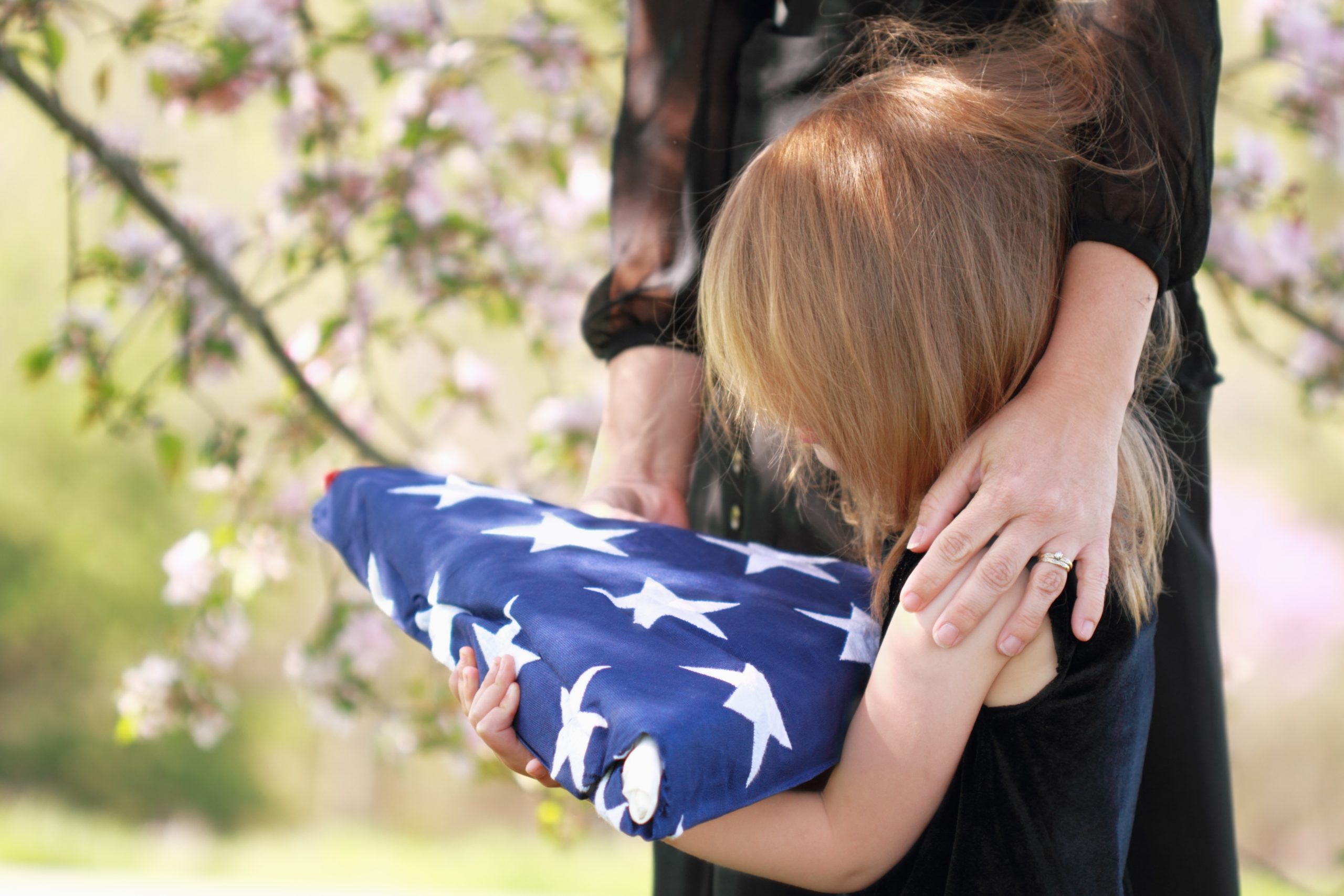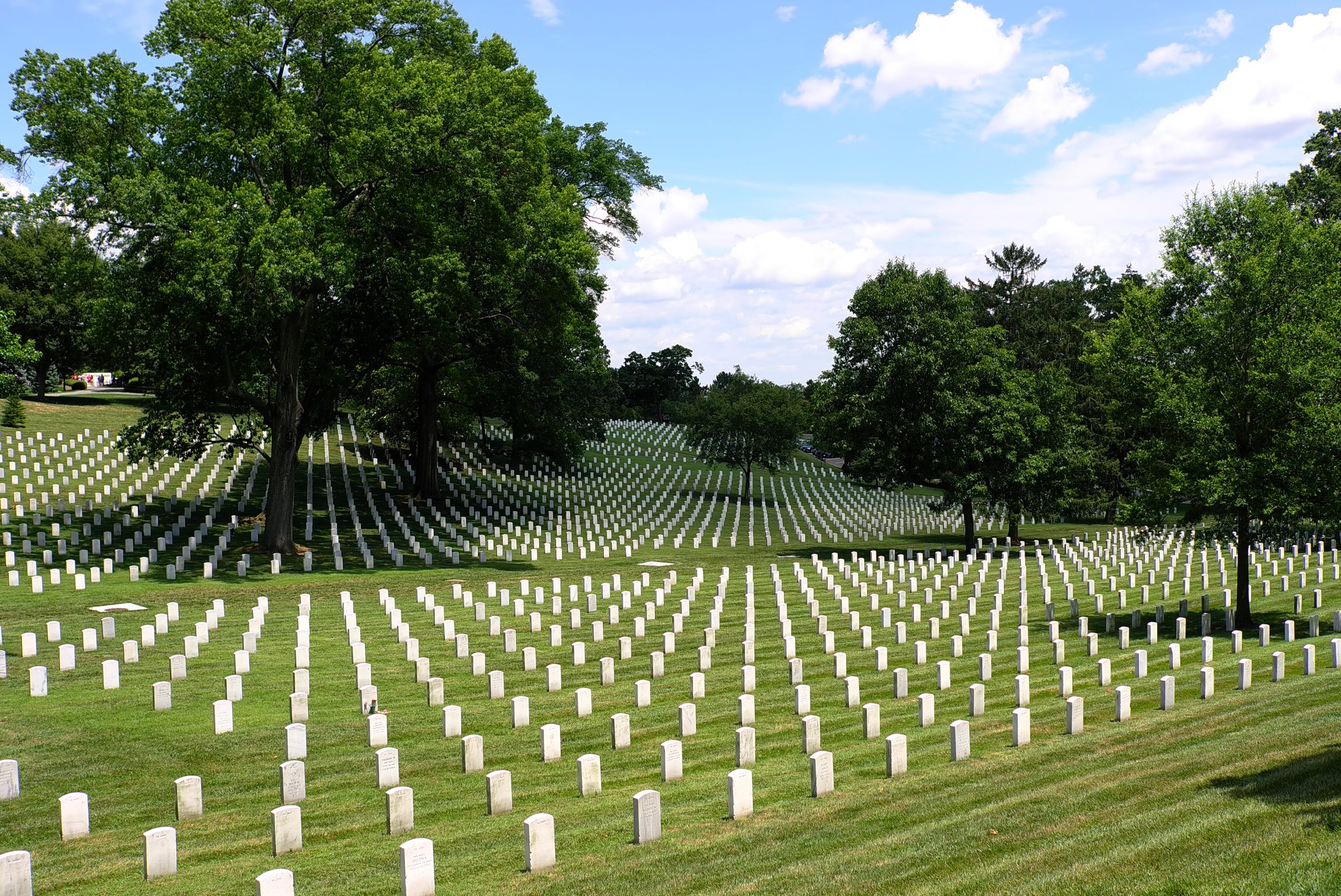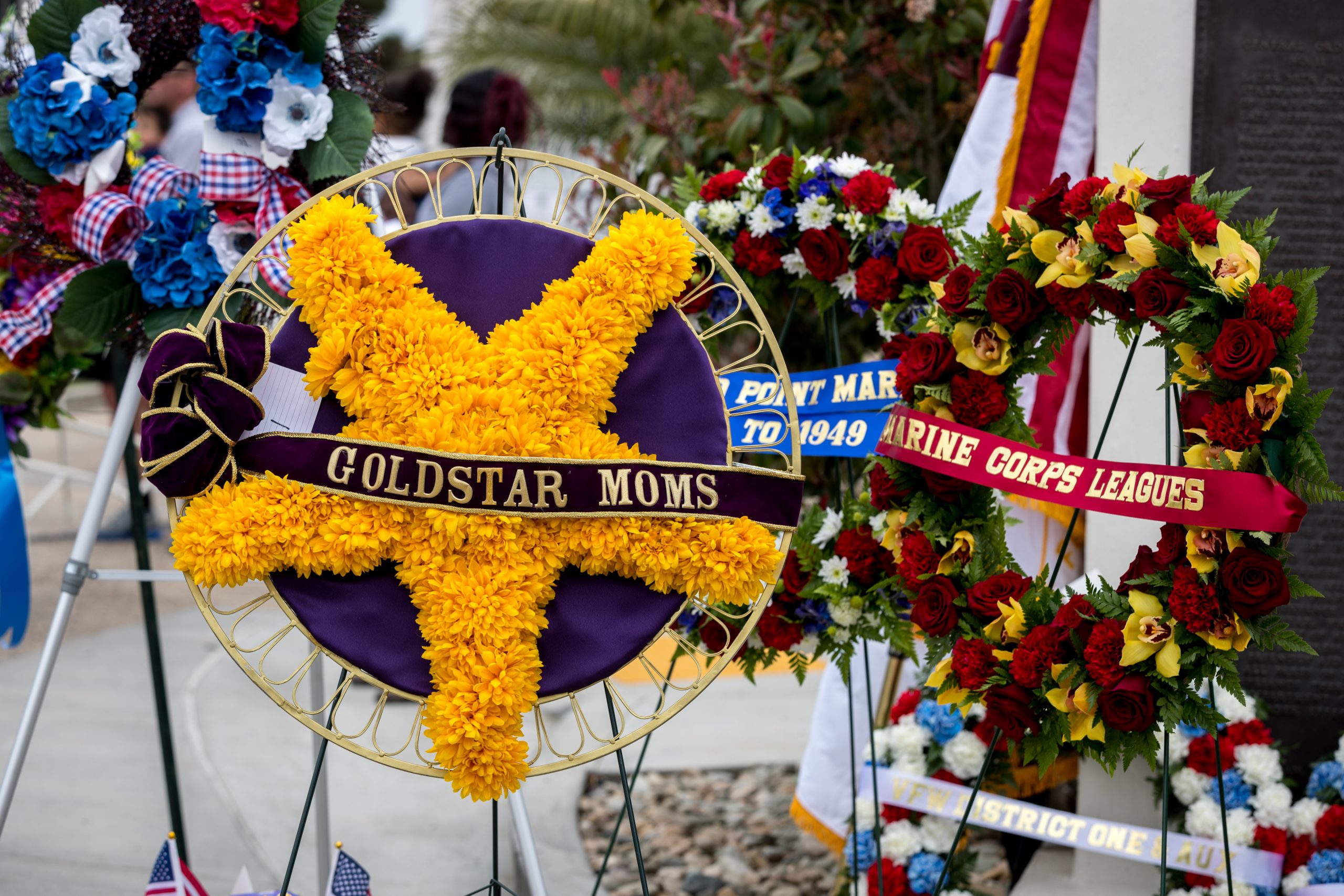Disenfranchised Grief in Gold Star Military Families
By COL Paul T. Bartone, MSC (Ret), PhD and Kenneth Doka, PhD
*This is an article from the Summer/Fall 2022 issue of Combat Stress
It’s a tragic reality that each year many U.S. Service Members are killed in military operations and still many more die in the training environment. Each one of these deaths comes as a sudden and painful loss for surviving family members. One way that the nation can pay tribute to the sacrifice of these families is by designating them as “Gold Star” survivors, a tradition dating back to World War I, when mothers of Service Members killed in action would place a banner bearing a gold star in their windows. Today, Gold Star status is signified by a distinctive lapel pin awarded by the U.S. Department of Defense (DoD) to qualified survivors, displaying a gold star on a purple background. The original legislation that established this award was passed on August 1, 1947 (Act of Congress, Pub. L. 80-306), and restricts it to situations where the death occurred on overseas operations or in terrorist strikes such as the 9/11 attacks. Unfortunately, this official definition leaves out many thousands of survivors whose military members died outside of hostile operations, as for example in training accidents and crashes. And while Congress has updated the language of the statute several times over the years, there remains considerable confusion and uncertainty regarding just which surviving military families can lay claim to “Gold Star” status. One negative consequence of this uncertainty is that grieving survivors of a non-combat military death may perceive that they are denied or are somehow undeserving of Gold Star status. This in turn can lead to feelings of disenfranchisement regarding their loss and grief. This commentary aims to bring attention to the mental anguish and potentially prolonged grief reactions experienced by thousands of surviving military family members who currently denied Gold Star status simply because of the location of their Service Member’s death.
In trying to determine just who qualifies for Gold Star status, two main problems become apparent. The first is one of consistency, or rather inconsistency. Definitions and designations of Gold Star Families vary widely, even within the federal government. The Gold Star designation, as established by Congress, stipulates that the Gold Star Lapel Button (GSLB) can only be awarded to next-of-kin (immediate family members) of active-duty military personnel who lose their lives during combat operations, during peacekeeping operations, or in a terrorist attack.1 These eligibility criteria are reflected in Department of Defense Instruction 1348.36.2 This definition excludes family members of most military deaths that occur outside of combat zones. Note that the law and DoD regulations say nothing about cause of death; only location. Thus, if an active-duty Service Member (including Reserves or National Guard while on active duty) dies of infectious disease, cancer or even suicide while on combat operations, his/her family still qualifies for Gold Star status.

Although the individual military services generally follow this definition, there is widespread confusion. For example, the U.S. Navy’s web site states that “Navy Gold Star is an inclusive program – regardless of your loved one’s military branch, location, or manner of death.”3 Adding to the confusion, over time Congress has passed a number of resolutions that use broader definitions of Gold Star status than that contained in Title 10 Section 1126. For example, the 2021 “Gold Star Families Remembrance Week” (September 19-25) recognizes the sacrifices of all “families in support of fallen members of the Armed Forces, as well as Veterans.”4 Similarly, the Gold Star Family Fellowship Program Act (House Resolution 107) provides a 12-month congressional fellowship for family members of deceased Service Members or Veterans, regardless of cause or location of death.5 In addition, individual states have their own definitions of Gold Star families, as well as differing in the benefits offered such families. For example, while 31 states offer Gold Star license plates only to family members of those killed in action, 8 states provide this benefit to family members of any military related death. Educational benefits for surviving family members also vary by state. To muddy things further, military non-government organizations have their own definitions, which are generally broader than the DoD definition. For example, the USO defines a Gold Star Family as “families of military members who have died in the line of duty.”6

The next problem concerns the second-class status experienced by family members who fail to meet the official DoD definition of Gold Star survivors. All those who sign up for military service know they are putting their lives on the line when they put on the uniform. Yet DoD Gold Star status generally acknowledges only those who die in overseas contingency operations. This policy serves to diminish the sacrifice of Service Members who die under other circumstances. For example, a widow whose husband dies in a helicopter crash in Iraq would be “Gold Star,” but if that same helicopter crashed in Texas, she would not get the Gold Star pin. Or if a Soldier dies of a heart attack in Afghanistan, his family is “Gold Star.” But should a Soldier die of a heart attack in Korea, his family is not “Gold Star.” Such discrepancies serve to disenfranchise the survivors and potentially complicate their grief, while also creating needless divisions among military survivor families. This issue impacts a large proportion of military families, since on average, only about 25% of active-duty military deaths each year occur in combat or overseas contingency operations. For example, out of 18,571 active-duty U.S. military deaths from 2006 to 2021, 75% or 13,969 occurred in the U.S., mostly from training accidents.7 This translates into approximately 918 non-combat-related active-duty deaths each year, and at least three times that many grieving family members.
Disenfranchised grief occurs when a loss is not socially sanctioned or publicly mourned.8 Under the current Gold Star definition used by the Department of Defense, military losses outside of a combat zone are denied the recognition that losses within a combat zone receive, even though it is only the location that differs. The Gold Star designation is important, not so much for any material benefits that Gold Star families may receive, such as special license plates or educational assistance, but for the social awareness the Gold Star provides regarding the family member’s loss and sacrifice. Grief is in part a personal, private affair, and can vary tremendously for different people. But grief is also very much a social process. The social responses and feedback that survivors receive from the people and organizations around them can have a powerful influence on how they make sense of their loss.9 Being recognized as a Gold Star survivor sends a message that the military and the larger society see this death as a heroic and unselfish sacrifice made for the greater good. This understanding brings psychological comfort to survivors and can ease somewhat their pain and suffering.
On the other hand, by denying Gold Star status to some survivors, we communicate to them that their loss was not as important, and is not so highly valued by the military or the nation. And any time the subject of “Gold Star families” comes up in the media or in social conversation, these survivors are reminded of their second-class status and the relative unimportance that is attached to their loved one’s death. In short, Congress and the DoD have inadvertently created a hierarchy of death, wherein deaths that occur in combat zones are perceived as involving greater sacrifice than those occurring in other locales and circumstances. For the surviving spouse, child, mother or father of the deceased Service Member, the shock and pain of the loss is the same. Distinctions based on the location of death generate a disparity that discounts the personal sacrifice and the shared mission of all those who serve. It is worth noting that this is not a mistake made by the American Gold Star Mothers8 or the Gold Star Wives of America.9 Both of these congressionally chartered organizations do not restrict membership based on the location or circumstances of the military death, but welcome all who have suffered the loss of an active duty loved one.
Research confirms that disenfranchised grief is a contributing factor in complicated grief,10,11 and can lead to a range of mental and physical health problems.12 This risk is increased for the military, where deaths generally share many factors already identified as complicating factors in grief. Military deaths are generally traumatic, sudden, and “out of order” (in the sense that younger people predecease their older relatives). Moreover, as the military is considered dangerous work, survivors are already potentially vulnerable to disenfranchised grief, since others may make insensitive comments such as “they knew the risks when they signed up.”13
At a time when the DSM-5 has begun to recognize the variety of forms of complicated grief, government leaders and the Department of Defense have it within their power to minimize such complications within military families, grieving families whose loved ones have also given their “last full measure” in service to the country. It’s time for policy makers to act by broadening and clarifying the definition of Gold Star status, to include the family members of any active-duty death, regardless of where that death occurs. The DoD should petition Congress to amend the legislation so as to recognize as Gold Star the survivors of any active-duty death, regardless of geographic location or time period. Further, DoD should establish a clear definition of Gold Star status in accord with U.S. code and assure that all the sister services stick to that definition.14 It’s time to stop creating second class citizens among surviving military family members by denying them Gold Star status when the death occurs outside of a combat zone.
References
- US Code Title 10 – Armed Forces, Section 1126. Available at https://www.govinfo.gov/content/pkg/USCODE-2010-title10/pdf/USCODE-2010-title10-subtitleA-partII-chap57-sec1128.pdf; accessed 14 April 2022.
- US Department of Defense Instruction 1348.36. Available at https://www.esd.whs.mil/Portals/54/Documents/DD/issuances/dodi/134836p.pdf?ver=mN9Jeg1LSLWwc52VRIjhdQ%3D%3D ; accessed 14 April 2022.
- US Navy Gold Star Program. Available at https://www.navygoldstar.com/; accessed 14 April 2022.
- Hyde-Smith, Warnock introduce Gold Star Families Remembrance Week resolution. Available at https://www.hydesmith.senate.gov/hyde-smith-warnock-introduce-gold-star-families-remembrance-week-resolution ; accessed 14 April 2022.
- Congressional Gold Star Family Fellowship Program. Available at https://www.congress.gov/bill/116th-congress/house-resolution/107/text; accessed 14 April 2022.
- USO: What is a Gold Star Family? Available at https://www.uso.org/stories/2471-what-is-a-gold-star-family; accessed 14 April 2022.
- Mann CT, Fischer H: Trends in active-duty military deaths since 2006. Washington, DC: Congressional Research Service 2021. Available at https://sgp.fas.org/crs/natsec/IF10899.pdf; accessed April 14, 2022.
- American Gold Star Mothers, Inc., Membership criteria. Available at https://www.goldstarmoms.com/membership-criteria.html; accessed 25 May 2022.
- Gold Star Wives of America, Membership eligibility. Available at https://www.goldstarwives.org/membership; accessed 25 May, 2022.
- Doka K: Disenfranchised grief: Recognizing hidden sorrow. Lexington Press; 1989.
- Harris DL: The social context of loss and grief. In Harris DL (Ed.): Counting our losses: Reflecting on change, loss, and transition in everyday life(pp. 15–24). Routledge/Taylor & Francis Group; 2011.
- Rando TA: The treatment of complicated mourning. Research Press; 1993.
- Worden JW: Grief counseling and grief therapy: A handbook for the mental health practitioner. Springer; 2018
- Ott CH: The impact of complicated grief on mental and physical health at various points in the bereavement process. Death Studies, 2003; 27(3): 249–272. https://doi.org/10.1080/07481180302887.
ABOUT THE AUTHOR

Dr. Paul T. Bartone is a Visiting Research Fellow at the Institute for National Security Policy, National Defense University. A retired U.S. Army Colonel and research psychologist, Bartone served as Commander of the U.S. Army Medical Research Unit-Europe, and taught leadership and psychology at the National Defense University Eisenhower School and at the U.S. Military Academy West Point, where he also served as Director of the Leader Development Research Center. As the Army’s senior research psychologist, he served as Research Psychology Consultant to the Surgeon General and Assistant Corps Chief for Medical Allied Sciences. A Fulbright scholar, Bartone is past-President of the American Psychological Association’s Society for Military Psychology, a charter member of the Association for Psychological Science, life member and Fellow of the American Psychological Association, and a Fellow of the Inter-University Seminar on Armed Forces and Society. He holds an MA and PhD in Psychology and Human Development from the University of Chicago.

Dr. Ken Doka is a Senior Vice President of Grief Programs at Hospice Foundation of America (HFA) and recipient of the 2019 Lifetime Achievement Award from the Association for Death Education and Counseling (ADEC). He serves as editor of HFA’s Living with Grief® book series and its Journeys bereavement newsletter and numerous other books and publications. He is a prolific author, editor, and lecturer; a retired graduate school professor at The College of New Rochelle; past president of ADEC; a member and past chair of the International Work Group on Death, Dying, and Bereavement (IWG); and a member of the TAPS Advisory Board. In 2018, the IWG presented Doka with the Herman Feifel Award for outstanding achievement in thanatology. He received an award for Outstanding Contributions in the Field of Death Education from ADEC in 1998. Doka is an ordained Lutheran minister and a licensed mental health counselor in the state of New York.
Combat Stress Magazine
Combat Stress magazine is written with our military Service Members, Veterans, first responders, and their families in mind. We want all of our members and guests to find contentment in their lives by learning about stress management and finding what works best for each of them. Stress is unavoidable and comes in many shapes and sizes. It can even be considered a part of who we are. Being in a state of peaceful happiness may seem like a lofty goal but harnessing your stress in a positive way makes it obtainable. Serving in the military or being a police officer, firefighter or paramedic brings unique challenges and some extraordinarily bad days. The American Institute of Stress is dedicated to helping you, our Heroes and their families, cope with and heal your mind and body from the stress associated with your careers and sacrifices.
